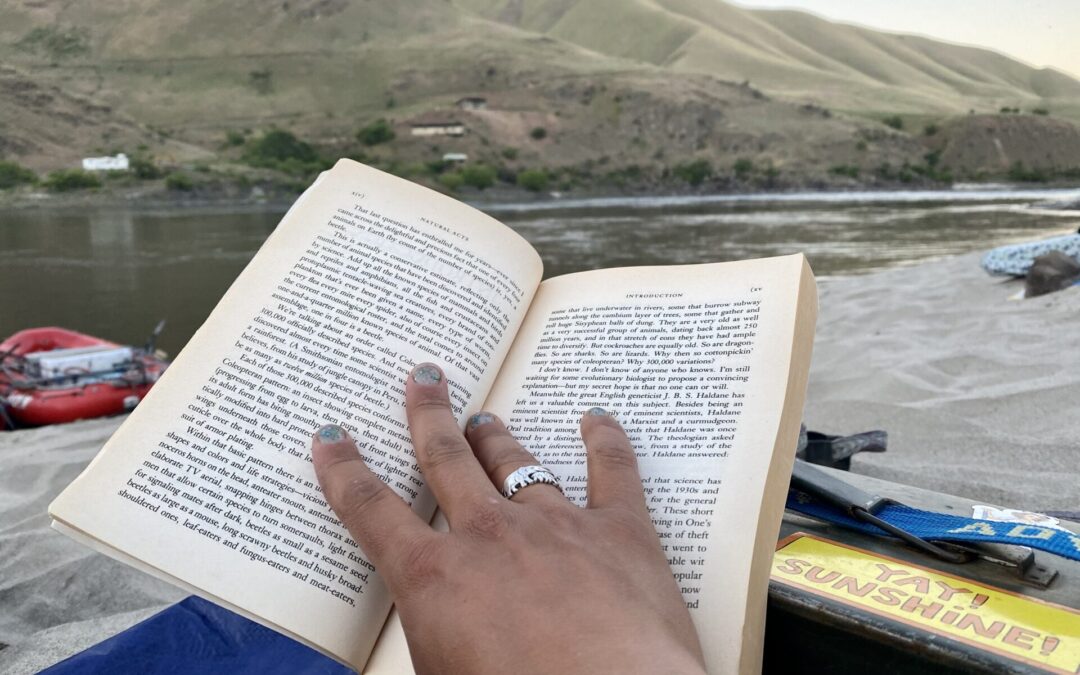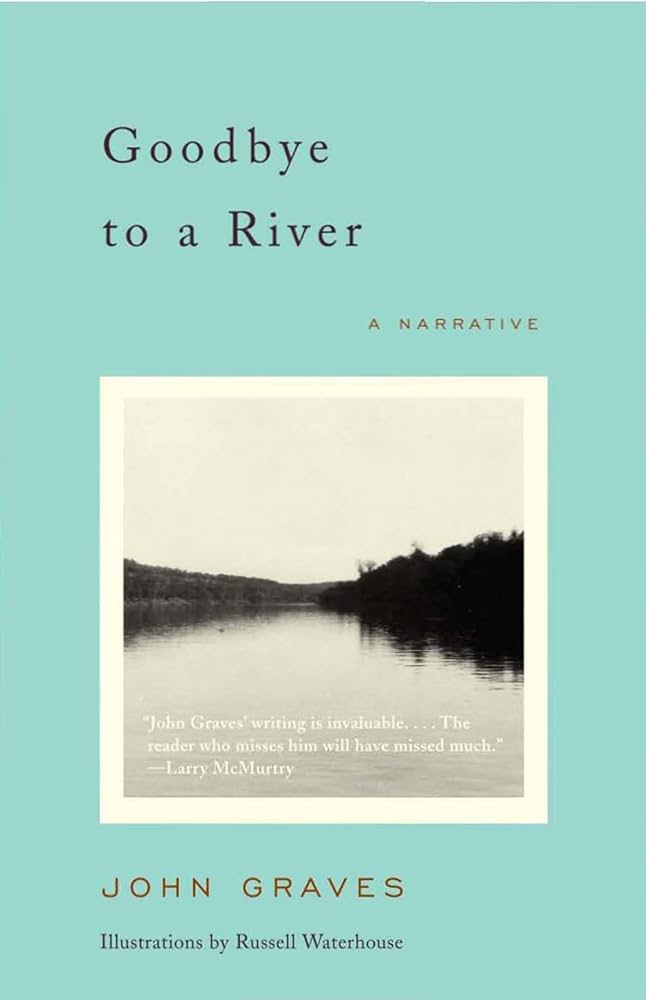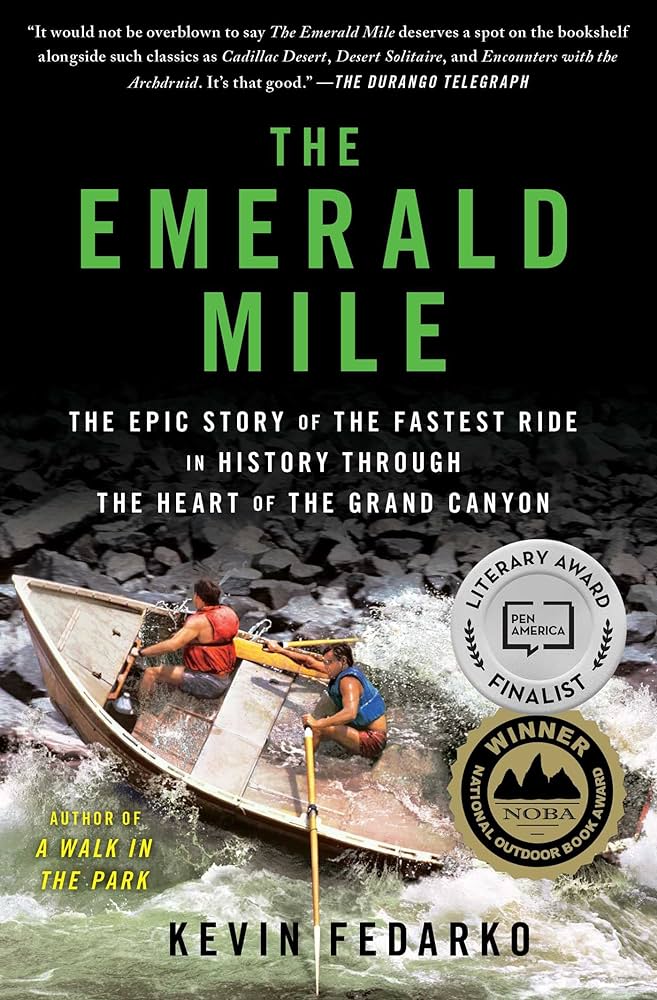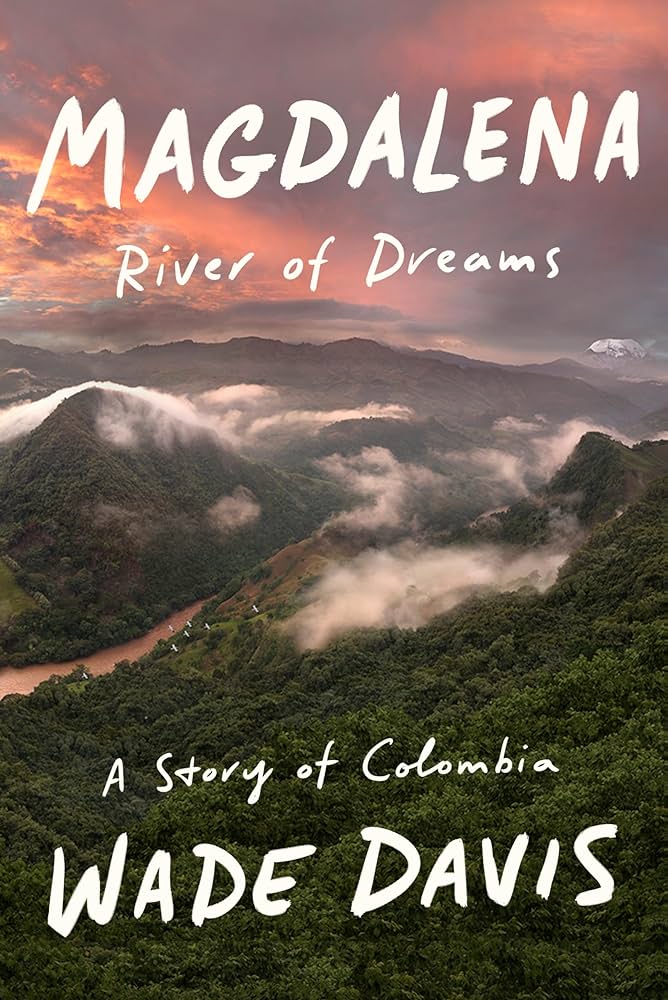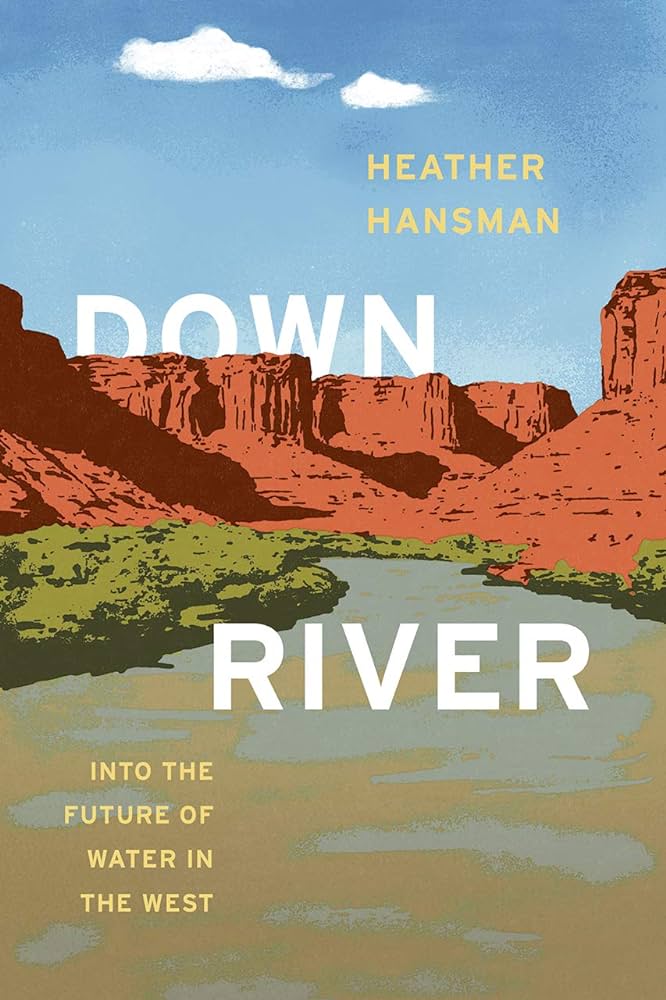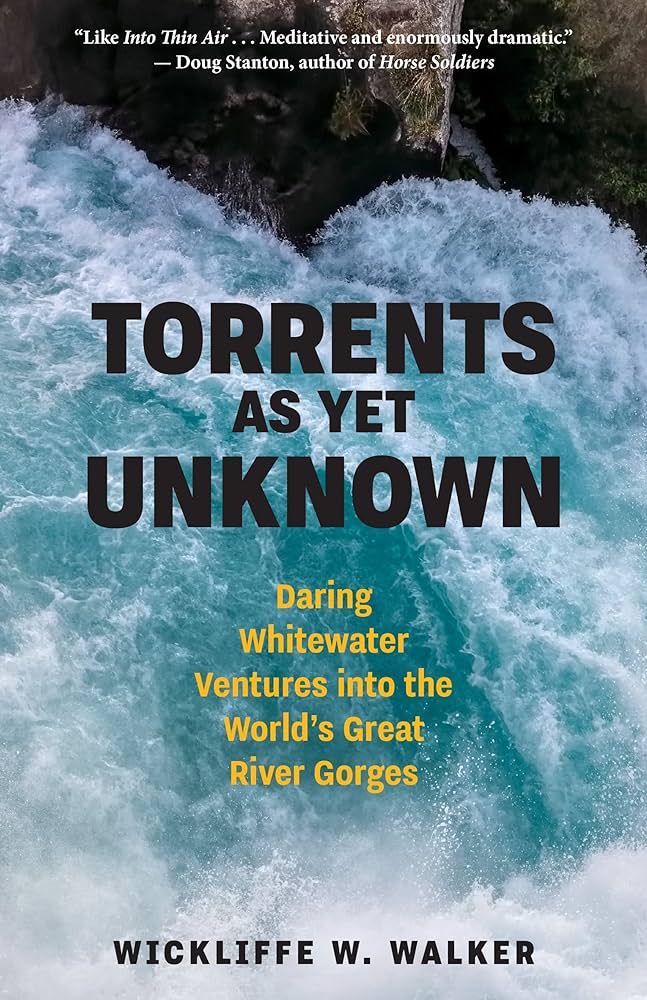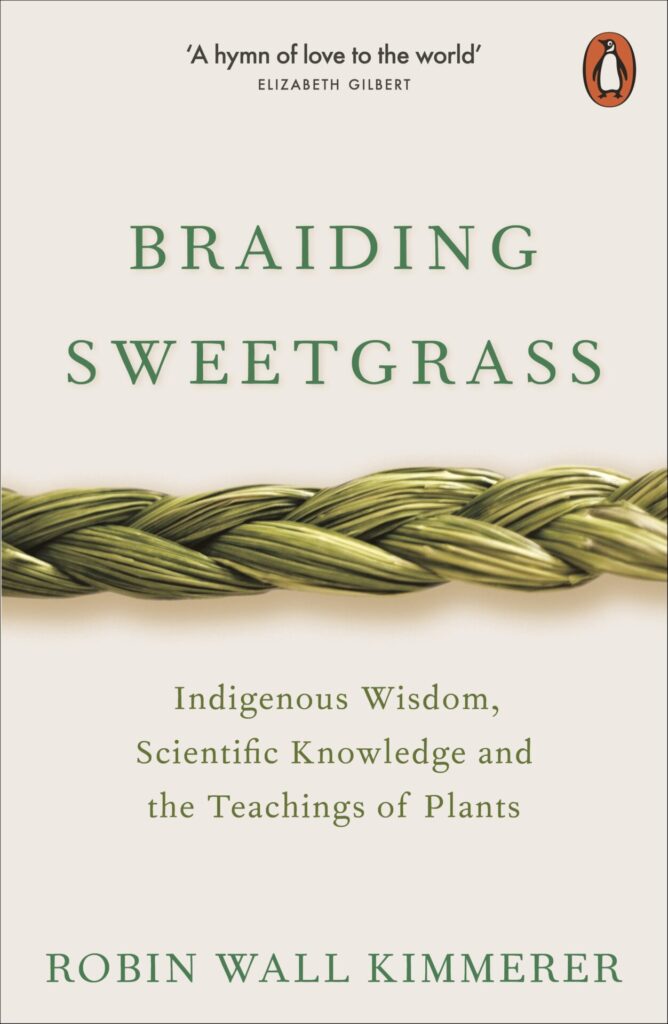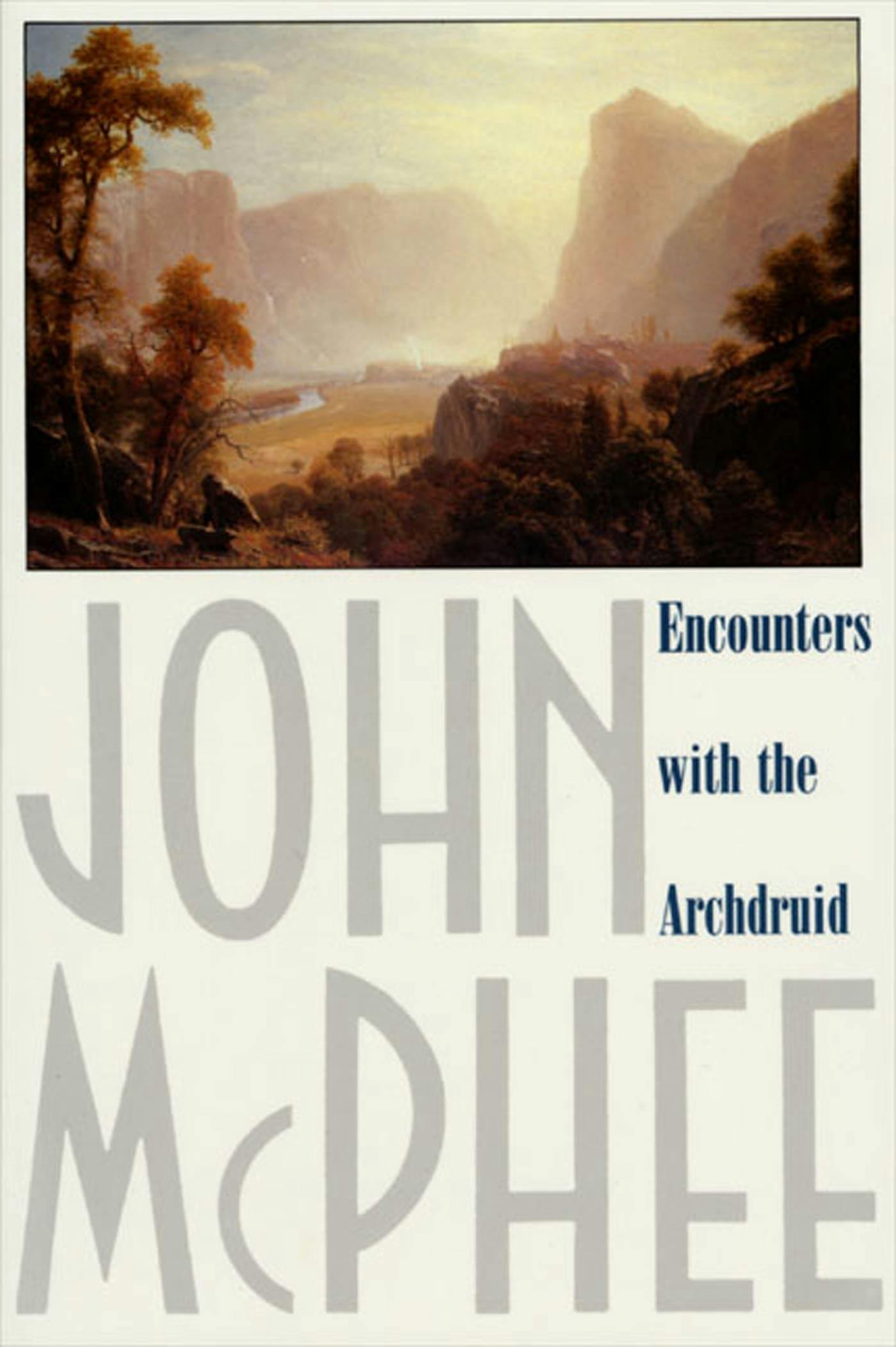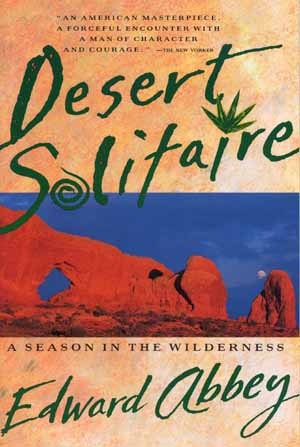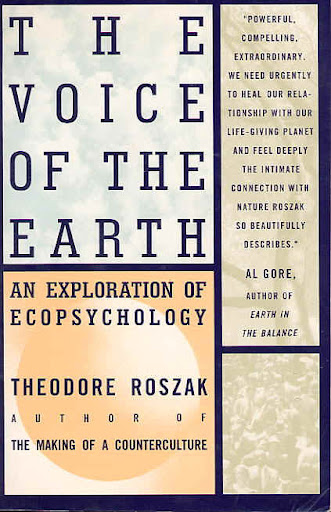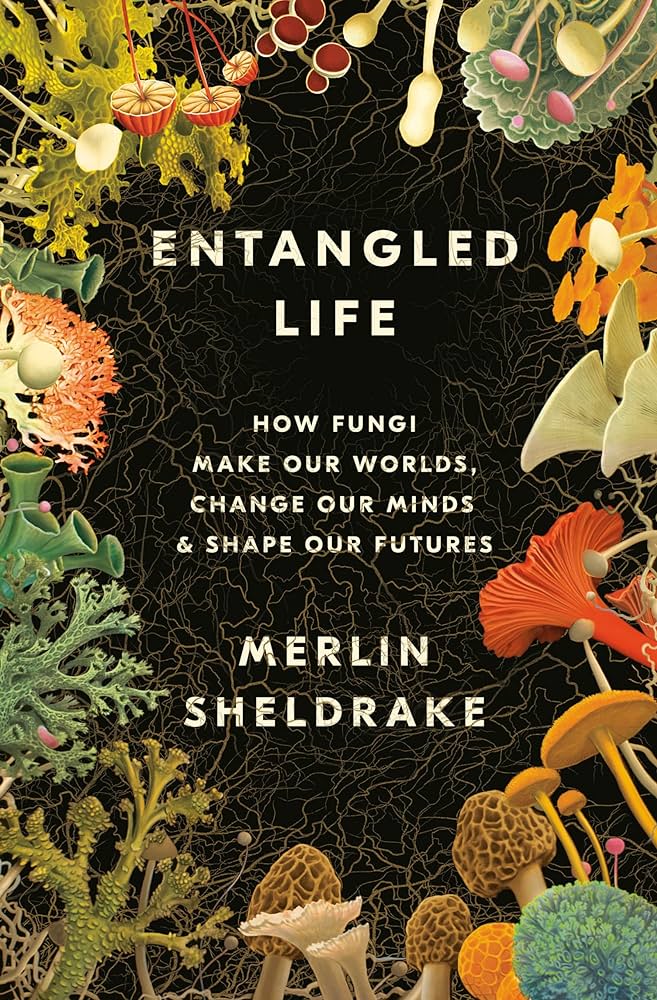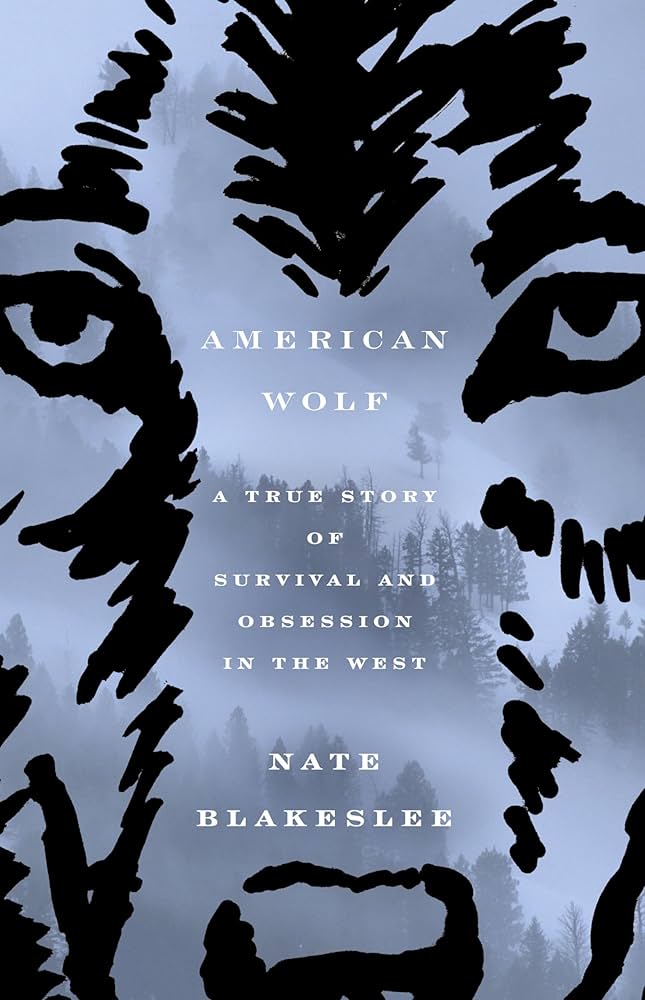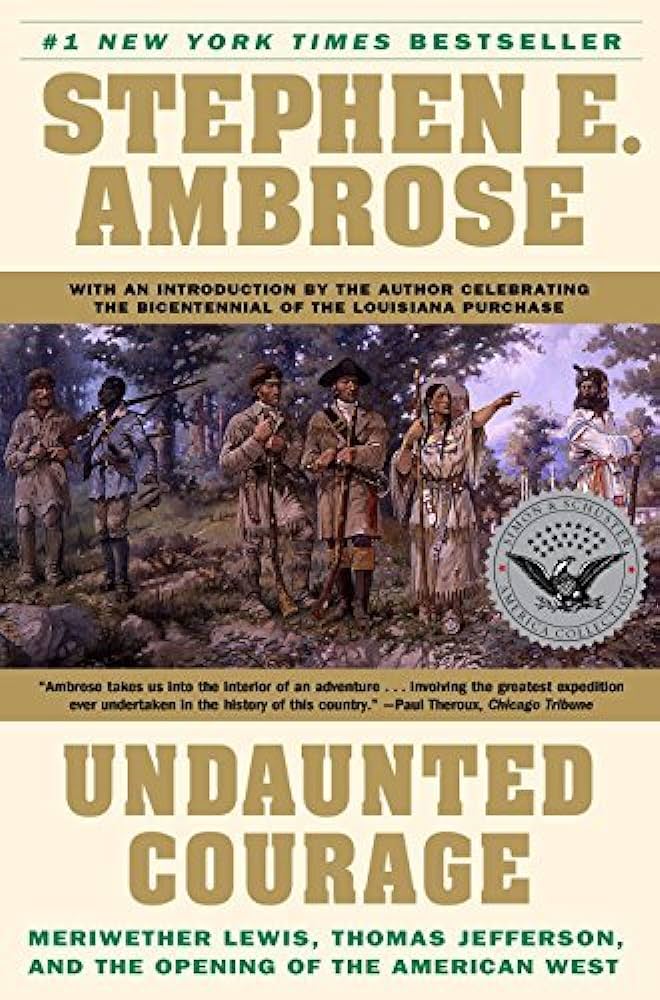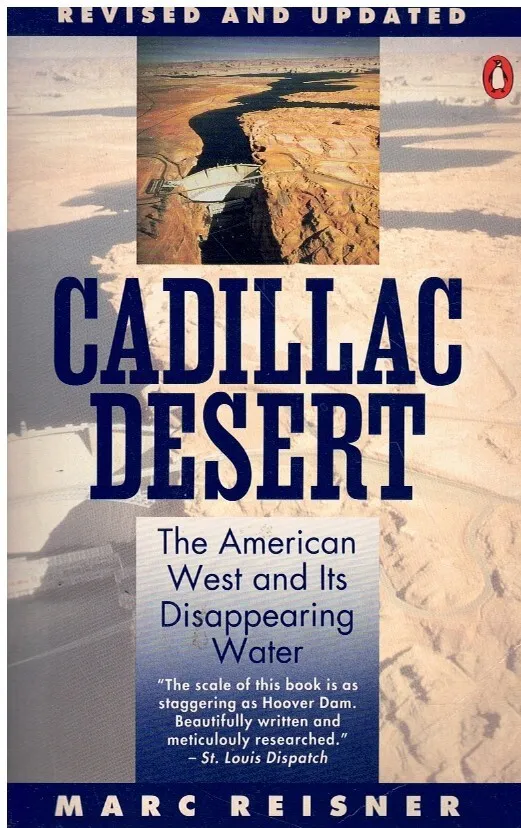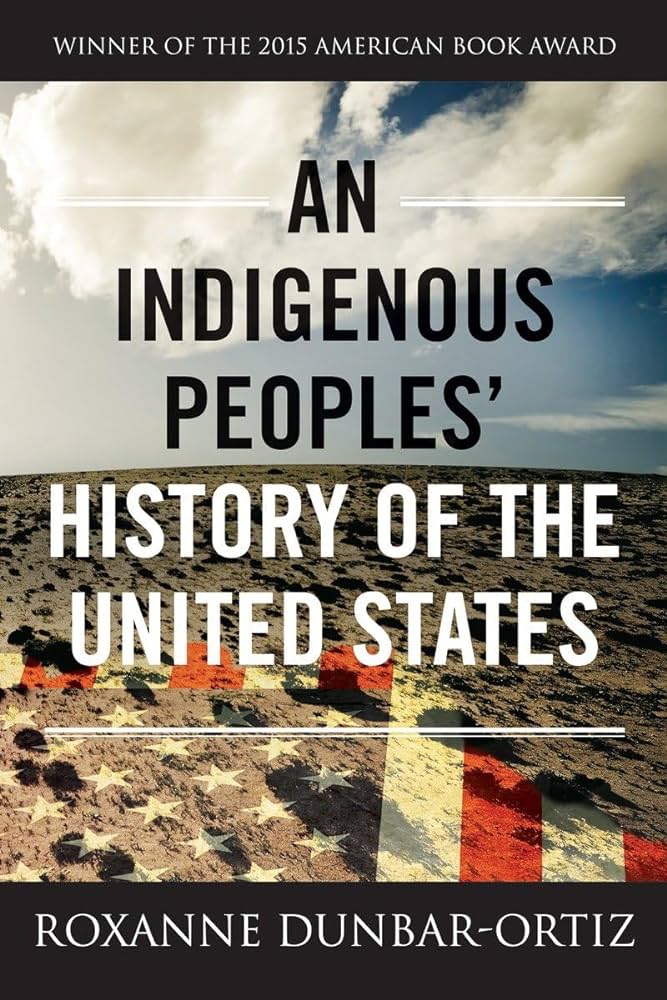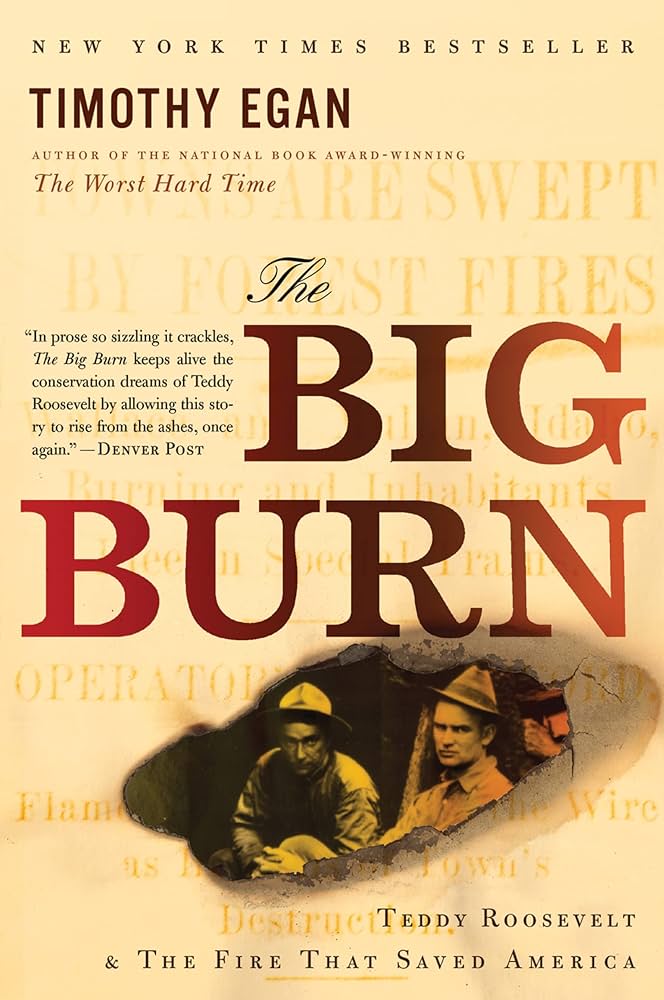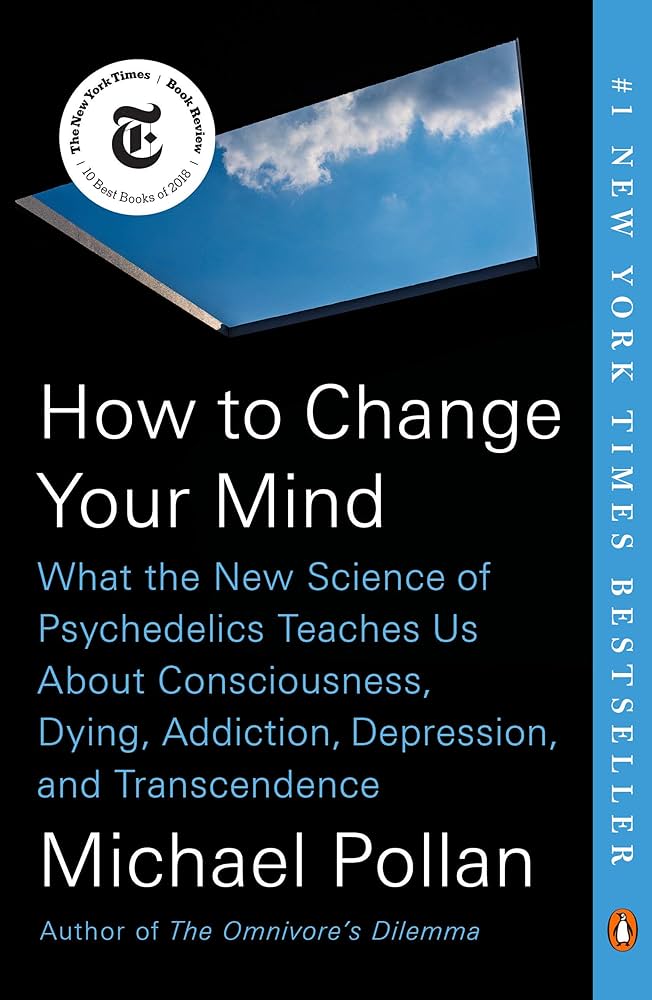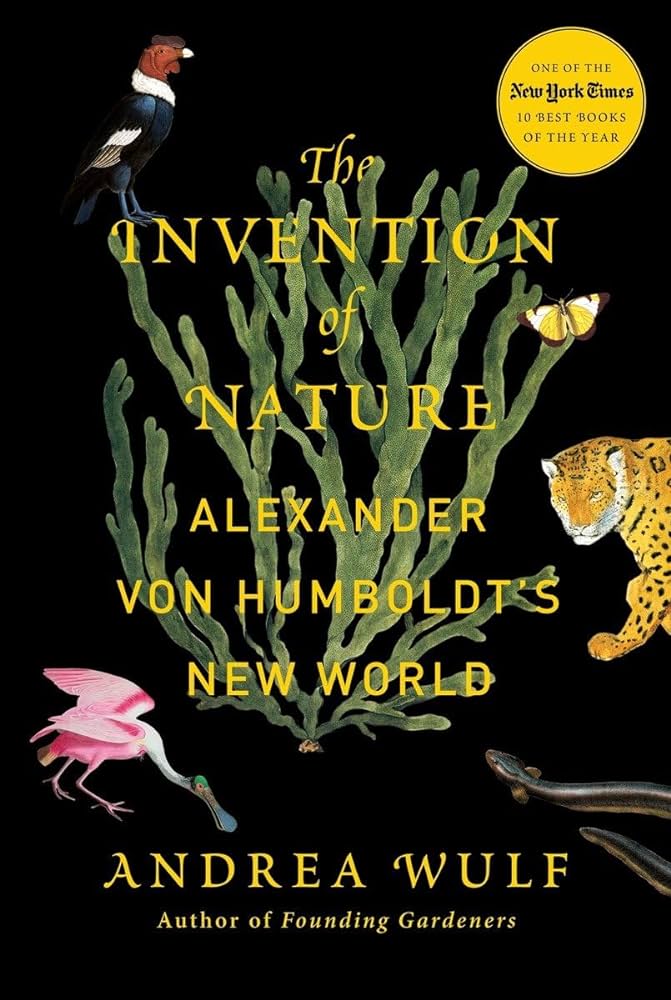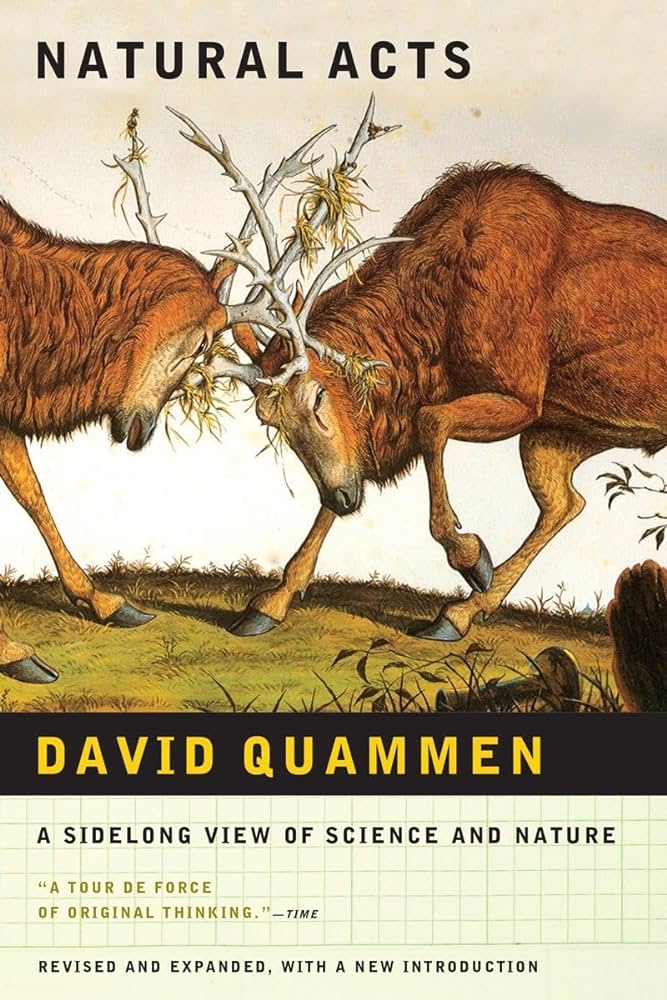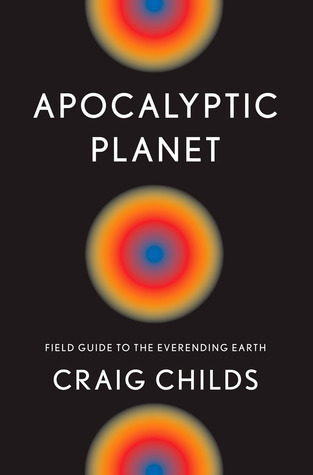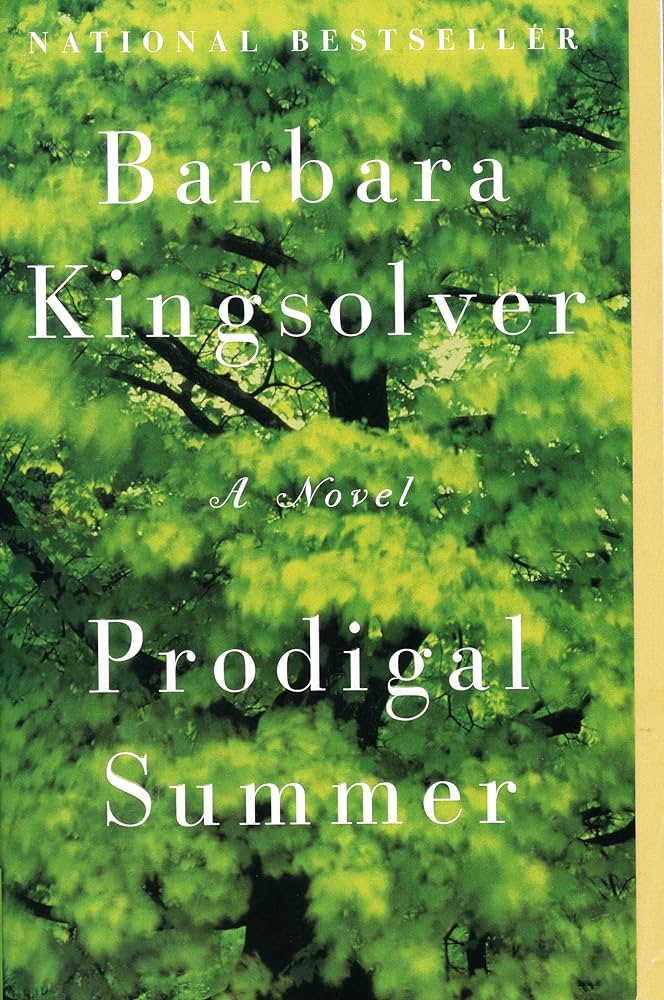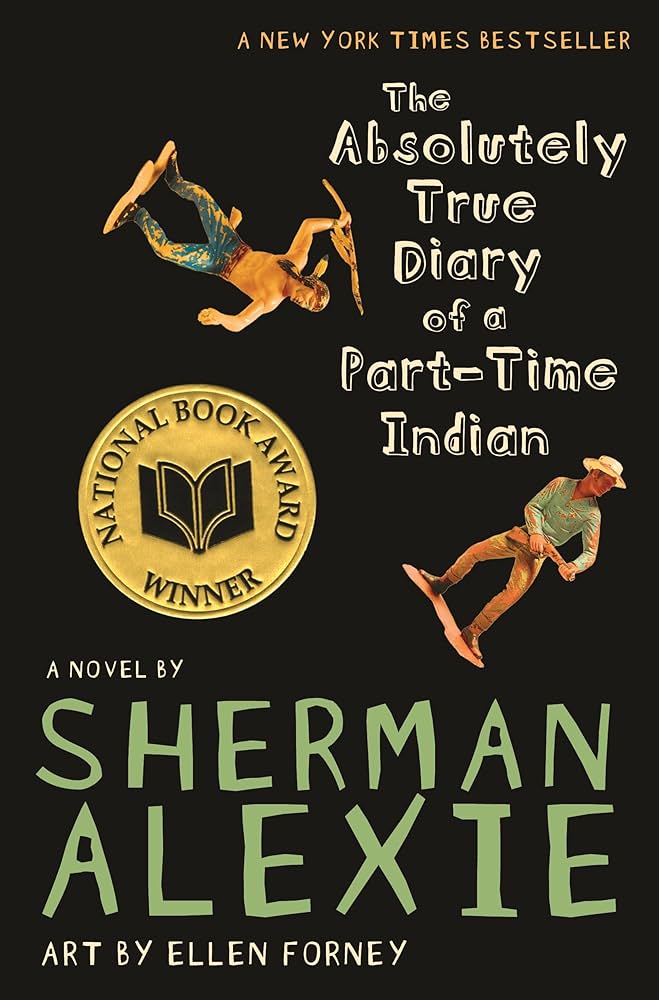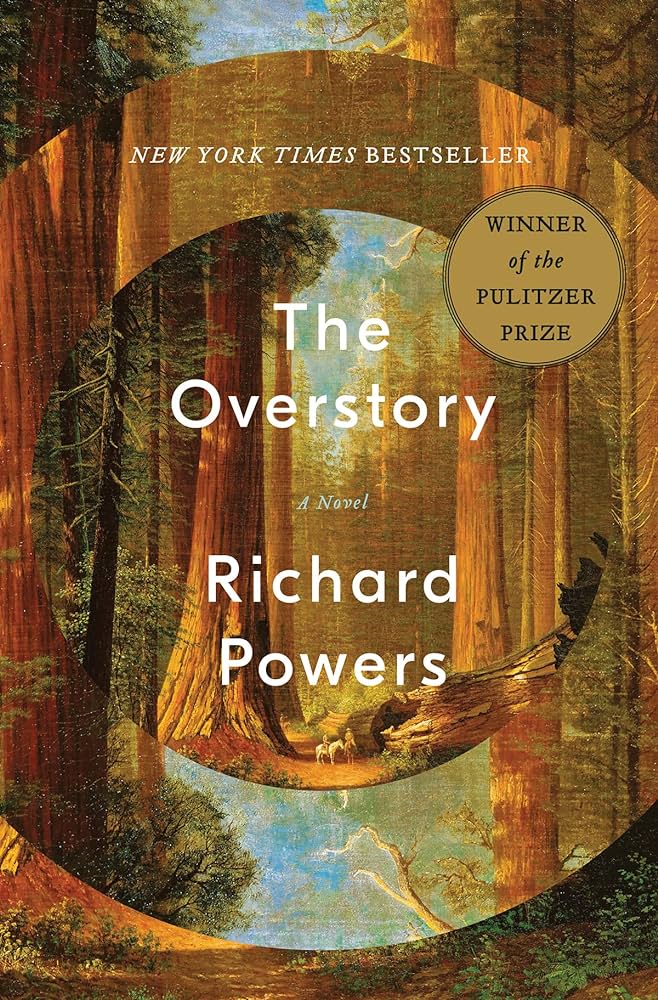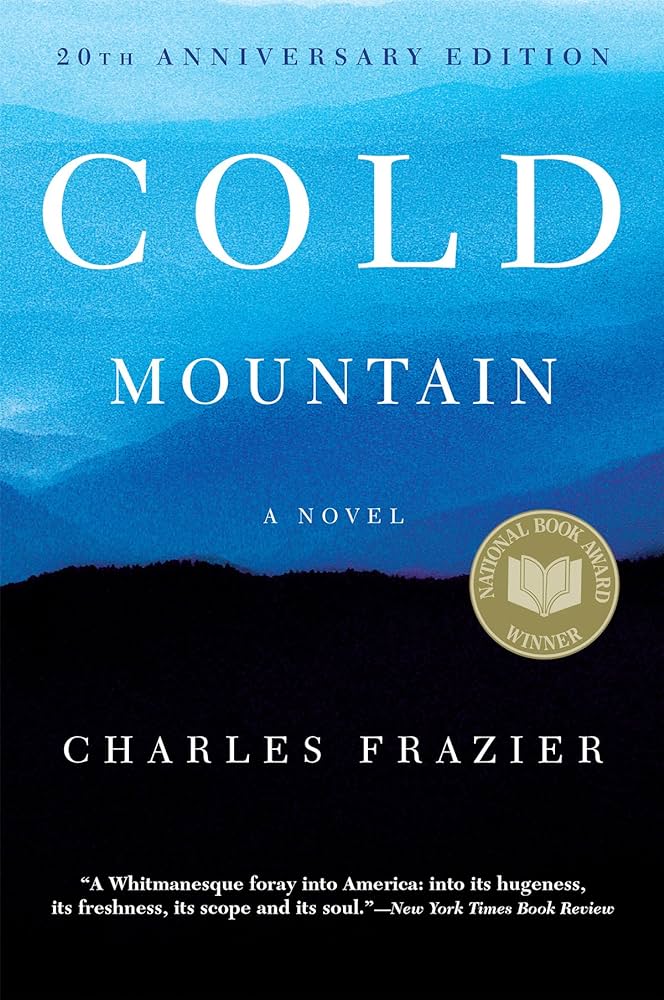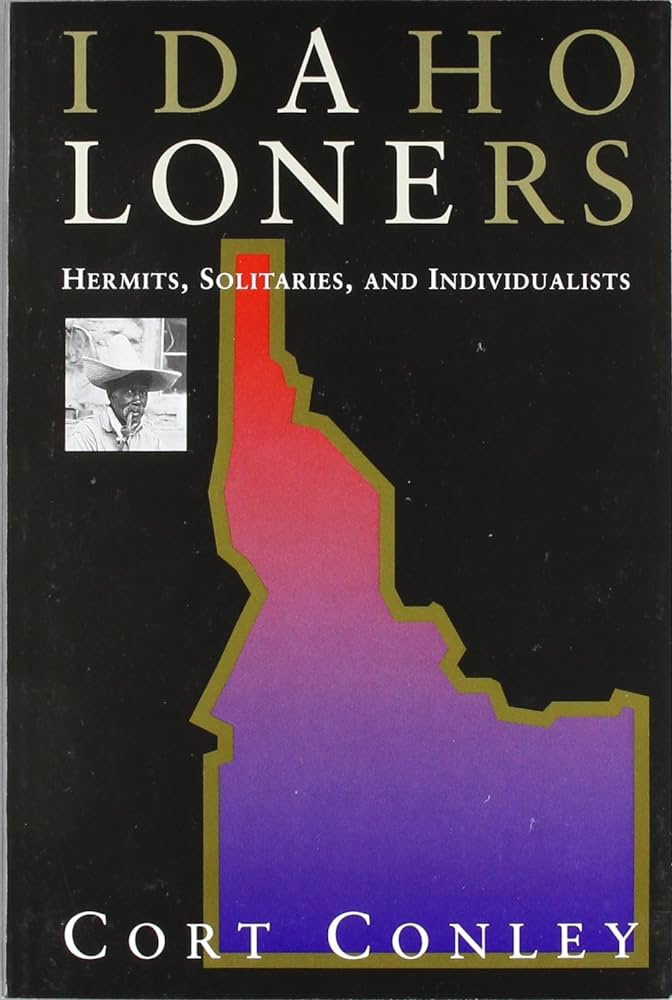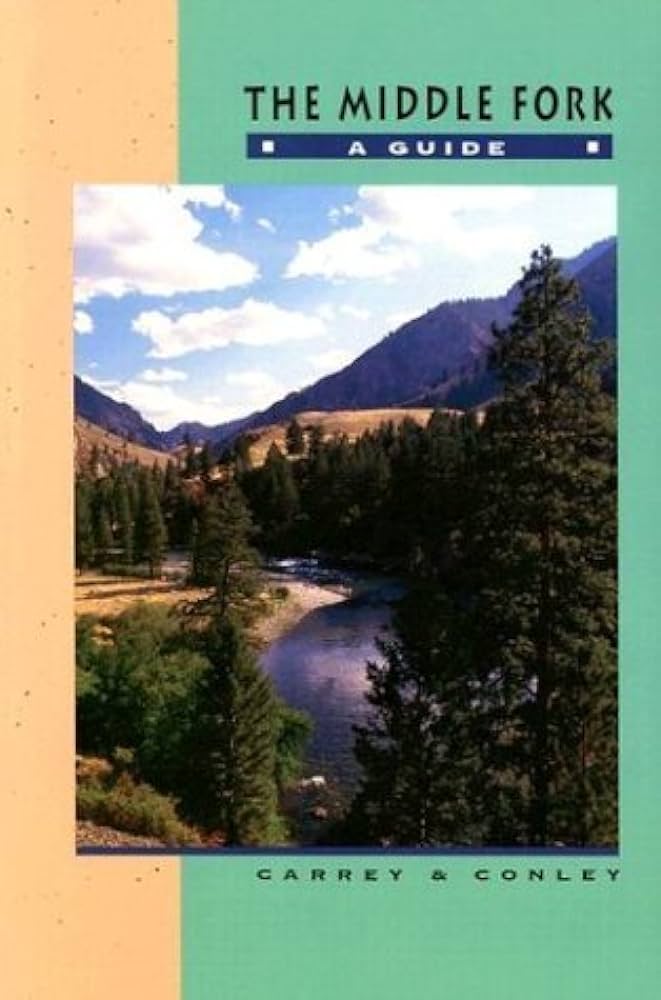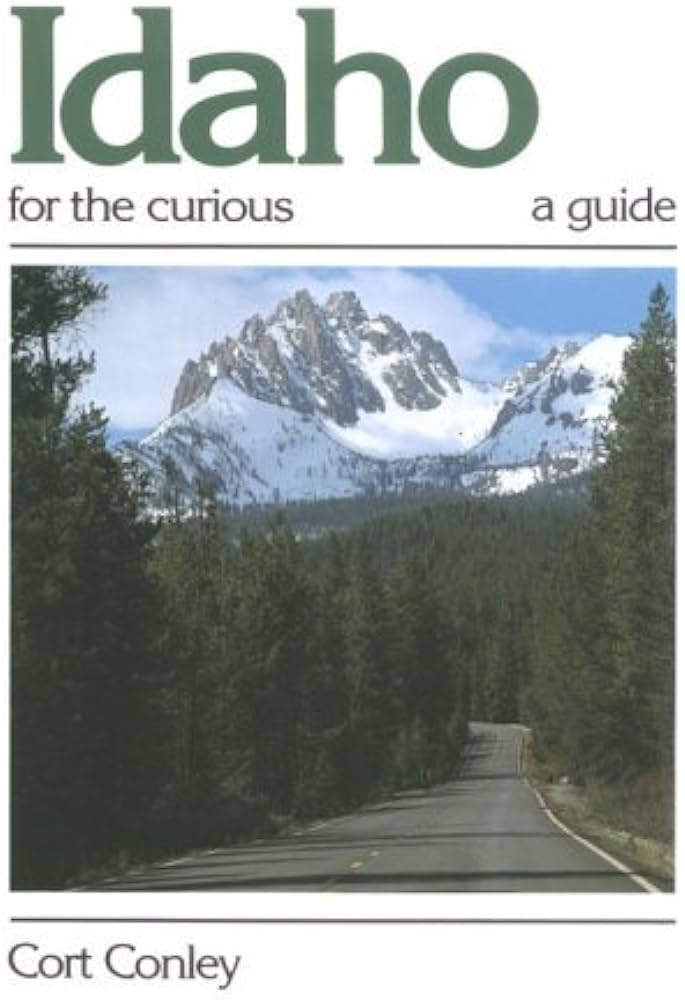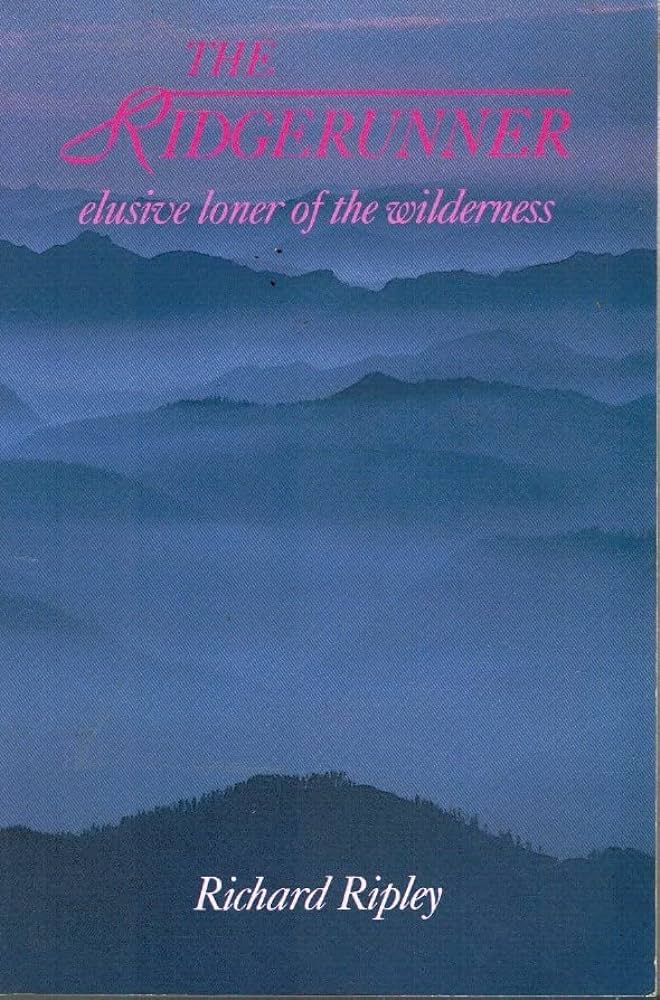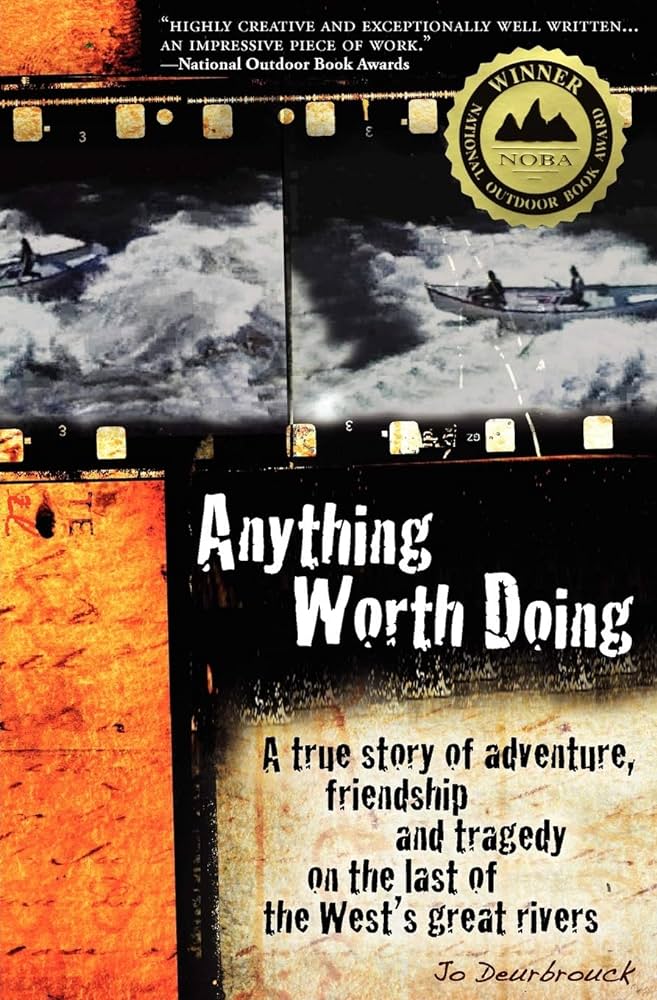Obviously, coming up with a list of outdoor books was difficult for me – I got carried away thinking of all the books that I find relevant to the great outdoors. I am an incredibly avid reader and I think one of the best settings for enjoying a good book is outdoors, be it on the river or somewhere in the wilderness. Because of my love for books, my list of books to read in those settings is extensive, maybe too long, and definitely not a list that could be completed on one Middle Fork Salmon River rafting trip. So I guess that while you work your way through the suggestions on this list, you’ll have to just get outside and into nature more and more.
Non-Fiction for the River Runners
Goodbye to a River: A Narrative — John Graves
John Graves elicits nostalgia and wistfulness in this bittersweet recollection of a trip down the Brazos River in Central Texas. It is a farewell journey, set months before a series of dams were to be installed on the river of his youth. He writes of a humble canoe journey down his favorite waterway with his companion, a puppy named Partner. His straightforward but visceral prose tells us of his time spent in fickle autumn weather, musing upon old blood feuds of the region and violent skirmishes with native tribes. Graves recounts vivid stories of bravery and deceit that shaped both the river’s people and the land during frontier times and later.
This book is a wonderful outdoor book for it’s rough-and-tumble energy, and is important to me because I too explored the waterways of the Brazos River when I was growing up. The days of Graves were a different time, and it was fascinating and heart-wrenching to view the river from his perspective, and to feel his loss alongside him.
The Emerald Mile: The Epic Story of the Fastest Ride in History Through the Heart of the Grand Canyon — Kevin Fedarko
Another book that will inevitably end up on any river-runners reading list, The Emerald Mile is so much more than what its title suggests. Yes, it talks of the speed run through the Grand Canyon and the guides who made it happen and the dam that almost failed, but it also dives deep into the history of humans interactions with the canyon, depicts just what it means to be a guide or a river runner and the inherent obsession with whitewater, as well as the politics of water rights and the drama of dams. A passage from this book perfectly describes what it means to drop into a rapid:
“The taste of that joy was absolutely intoxicating, a kind of drug, and perhaps the most potent part of the charge lay in the irrevocability of the moment when you untied your boat, and you and your partners peeled out into the current above a rapid in a tight and graceful little arc like a formation of miniature fighter jets. For a minute or two, you would find yourself drifting on a flat and glassy cushion of serenity as the current slowly gathered its speed and heft beneath the bottom of your boat and you drifted toward this thing that waited, invisible, just beyond the horizon. It was silent during those minutes, the only sounds being the creak of your oars in their locks and the dipping of the blades as you made a few microadjustments in the hope of putting your hull squarely on the one tiny patch of current that would insert you through the keyhole in the cosmos. Then in the final seconds, you would start to hear the dull, thunderous roar, and you could see the little fistfuls of spray being flung high into the air. This, perhaps, was the most riveting moment of all, because by now all of your decisions had been made — you had done your homework and sought a point of balance between instinct and analysis, listening to the data flowing from both your brain and your gut, and now you were well and truly committed. This thing you were running down had no brakes, no rewind, no possibility of a do-over. You would ride the surge of your adrenaline and surf the watery crescendo that was about to explode before you, and you would accept the consequences, good or bad, along with whatever gifts or punishments the river was prepared to dish out. There were lessons there, insights a man could put in his pocket and take out later, long after he was out of the canyon, tiny compass points to steer by during those seasons when the river that was your life turned turbulent and ugly.”
Magdalena: River of Dreams, A Story of Colombia — Wade Davis
If you’re looking for a book to take you to an entirely different culture and country, try Magdalena, a captivating and alluring ode to the most important waterway in Colombia. The mighty Magdalena River made possible the formation of the country of Colombia, and has been shaping its landscape, people, and politics for generations. This river serves many as a corridor of commerce and a confluence of cultures. It is the source of Colombian music, literature, poetry, and prayer, and has served in dark times as the graveyard of Colombia. Yet it always returns as a river of life-bringing capabilities. Winding together memoir, history, and journalism, Davis tells the story of the country’s most magnificent river, as well as the story of Colombia itself as a place and as a people.
I have traveled Colombia extensively, and could not think of a more insightful and poetically written book about its most impactful river than Magdalena: River of Dreams. This book paints a detailed image of Colombia’s entire colorful history, from times when indigenous people created fantastic civilizations 1000s of years ago, to the more recent saga of war, destruction, and recovery. The people of Colombia have endured countless hardships with resilience and an unbelievable faith in life and love, and the River Magdalena has served as their purveyor of destiny.
Downriver: Into the Future of Water in the West — Heather Hansman
The Green River is one of the most important waterways in the country, twisting and turning over 730 miles from it’s source in the Wind River Mountains to its confluence with the Colorado River in Canyonlands National Park. The Green River is an intriguing place – a desert river at heart, warped by mans’ hands into something we know is unnatural yet still holds beauty. It’s an oasis for vacationers in their RV’s escaping the cold of northern winters; it’s a series of reservoirs that, in the summer, offer up hundreds of thousands of acre-feet of precious water to evaporation; it’s a haven for the river rats that use the river as a playground; it’s managed by massive dams and canals that siphon water hundreds of miles to quench thirsty, irrigated crops and entire metropolises. It’s a used river, overtaxed and tamed.
This is on my list of outdoor books because of its intimate descriptions of life on an extended journey and for its greater relevance to nature and the challenges being faced. Heather Hansman completed her own journey of the Green River from source to confluence; the same trip that I did, but cut short at the Colorado River. She dove deep into political and cultural history on her trip to better understand the water crisis that has been unfolding for decades. Fights over the river’s water, and what’s going to happen to it in the future, are long-established, uncontrollable, and deteriorating as the West gets hotter and drier and more people depend on the river with each passing year. As a former river guide and now an environmental reporter, Hansman was aware these battles were being waged, but felt determined to see them from a unique perspective. She took to the river by herself in a packraft and let the words flow from there.
Torrents as Yet Unknown: Daring Whitewater Ventures into the World’s Great River Gorges — Wickliffe W. Walker
This book tells the stories of ten thrilling and pioneering decents through some of the Earth’s most remote and forbidding stretches of river canyons. These accounts come from a time when adventurers didn’t have access to satellite imagery or drones, and had to rely on hard topographical maps and their own instincts for rationalizing the possibility of a journey. The river canyons were mysteries left to only the most intrepid. The characters in this book are as remarkable as the daunting geography and conditions they set out to confront in their boats of choice. Author Walker tells the narratives of ten whitewater adventures, from the Zambezi River in Africa, to the Tsangpo in Tibet, to the Yangtze River roaring through the Tiger Leaping Gorge in China.
I am a huge fan of expedition-style trips because of the dedication, time and effort, and sheer willpower that must go in to their successful execution. Reading outdoor books like this makes you think “what kind of person would possibly want to do that?” And, “how did they manage to survive?” Whitewater is one of the most forbidding unknowns, especially as it rushes headlong into a canyon known for its impassibility. Walker does an amazing job breaking down these expeditions from the first crazy thought to the final stroke of the paddle or oar blade. This book helps you appreciate the magnitude and drama of some of the world’s most notorious rivers, and the audacity of the first boaters to take on the challenge of their whitewater.
Non-Fiction for the Nature Lovers
Braiding Sweetgrass: Indigenous Wisdom, Scientific Knowledge and the Teachings of Plants — Robin Wall Kimmerer
Kimmerer teaches us just what it means to live in harmony with nature and our planet, and describes how potently one feels the damages that are done by humans to the natural world. Drawing on her life as an indigenous scientist, and as a woman, she demonstrates how other living beings offer us gifts and lessons, even if we’ve forgotten that we can hear their voices and receive their wisdom. Mother Nature offers us bounties in gifts, and in order to reap these benefits, we must coexist in a mutually symbiotic and respectful relationship with her. Otherwise all we do is strangle and destroy.
I loved this book for its lessons and for how they were unhurriedly and patiently taught and explained. The simplest of tasks and the most delicate of flowers can hold so much power and knowledge. Braiding Sweetgrass helped remind me to slow down and appreciate the beauty in the most minute of things. This is a wonderful book to read outside because it will have you pausing, looking up and around at the scenery surrounding, and taking note of all the little sparks of nature that make our world so special.
Encounters with the Archdruid: Narratives About a Conservationist and Three of His Natural Enemies — John McPhee
John McPhee relates three separate but impactful encounters between “the Archdruid” David Brower, former president and founder of the Sierra Club and one of the first and foremost environmentalists of our time, and three leaders in the commercialization of our world as we know it. Brower confronts geologist Charles Park, land developer Charles Fraser, and US Commissioner of Reclamation Floyd Dominy, who all hold contradictory views of our planet and its natural resources, and how we should be using them. These interactions are recorded and reflected upon by McPhee as an unbiased member of society, wishing to portray both sides of every story.
I recommend this book because it helped me understand the importance of figures like Brower who fought until their last breath for our wild places. It put into context the difficulties and compromises that have to be made with the rich and the powerful in order to preserve even just one square mile of wilderness.
Desert Solitaire: A Season in the Wilderness — Edward Abbey
No outdoor traveler booklist would be complete without a nod to the king of vehement nature writers himself, Ed Abbey, who is the reigning author of outdoor books, and champion to the wild places. Desert Solitaire is probably his best known work, as it paints intoxicating imagery of the American desert, and howls of the injustices done by the American people to what should be their most cherished landscapes. Utilizing his quintessential colorful language and a perspective both pointed and stubborn, Abbey captures the heat, mystery, and surprising bounty of desert life. Desert Solitaire is a contemplative work about the stark landscapes of the red-rock west, a zealous vote for wilderness, and a cutting lament for the commercialization of the American wilderness.
I read this book on my source-to-sea journey that took me through the heart of Canyonlands National Park and other wildernesses that Abbey soliloquized so enthusiastically about. It invoked fiery feelings of outrage at the treatment of our most pristine places, and made me consider all that had been lost since the time the book was published and now. I feel the need to channel Ed Abbey in Desert Solitaire in order to fight for the preservation of our land.
The Voice of the Earth: An Exploration of Ecopsychology — Theodore Roszak
Roszlak dives deep into the human psyche in order to establish a modern connection with psychology and ecology, theorizing that if we are able to make these studies and practices into one form of ecopsycology, we are one step closer to saving the planet from ourselves. Drawing on our understanding of evolution and the self-organizing universe, Roszak illustrates our foundation in the greater web of life and explores the relationship between our own sanity and the natural world. He explains that the needs of the planet and the needs of the person are a continuum that must be held in a mutually respectful balance. We need to recognize that saving the planet from injury will in turn, save ourselves from the same misfortune.
Reading this book was a mental rollercoaster. There were many passages that I had to read several times in order to fully grasp their meanings. But when I did come to an understanding, I was floored by the revelations Roszak had expounded upon. I gained new insights into the formation of the universe and our place in it, and a new respect for the consequences of our industrialized actions. I highly recommend this book for anyone who wants to delve deeper into their comprehension of the human psyche and how it could be shaped in a more universally-minded manner.
Entangled Life: How Fungi Make Our Worlds, Change Our Minds & Shape Our Futures — Merlin Sheldrake
Mushrooms are having a moment right now, with everyone wanting to learn more about these magnificent and fascinating creatures. Really though, fungi have been playing an integral role in the history of the planet since the origins of life on earth. The magnitude of the fungi presence in our world is astounding, with somewhere between 2.2 and 3.8 million species of fungi in existence. We know so little about this fantastic kingdom, but what we are starting to discover is just how important the fungi is to nearly every aspect of life on earth. Sheldrake leads us through some of the most incomprehensible recent findings about fungi, such as their ability to link different species underground, their ability to communicate and transfer nutrients between these species and themselves, and their ability to transform themselves completely depending on their wants and needs. Fungi are unlike any other living being known.
This book was a joy to read, as each page revealed new truths about the cute and alluring fungi. I’ve always loved mushrooms purely for aesthetic and taste, but the more I learn, the more I realize how incredibly important this little creature is for all of us. Sheldrake also alludes at just how important the fungi could be for our future as far as sustainable solutions for agriculture, food, and infrastructure. Every time I dig in the dirt, spy a fruiting mushroom body, pass between plants or under trees, I think of the fungi that play integral roles in linking all of life together for the better.
American Wolf: A True Story of Survival and Obsession in the West — Nate Blakeslee
Wolves have been a topic of controversy since man first encountered their formidable presence thousands of years ago. In recent times, their reign has narrowed and shrunk immensely due to the overwhelming human presence in their territories, and the assumed antagonism between some factions of people and these wild animals. They were hunted to near extinction in the lower 48 states by the 1920s, so scientists and biologists have fought hard to bring wolves back into the rockies, amidst immense controversy. This book tells the harrowing and admirable story of one wolf in particular, O-six, who was a scion of one of the packs reintroduced into Yellowstone. This courageous and charismatic alpha female was uncommonly strong, a compassionate and merciful leader, a fiercely intelligent warrior, and a loving mother. As she raises her pups and protects her pack, O-six is challenged on all sides from hunters, cattle ranchers, politicians, and other Yellowstone wolves.
I cried when I read this book, several times. I became so attached to this wolf and her family and the tenacity in which she struggled to survive. There is something so moving about intelligent and emotional creatures and their fight for survival, against odds they cannot comprehend and enemies they cannot fathom. O-six was one of the most incredible and impactful creatures to exist in our modern world of limited wilderness, and her life is an emblem for a fight she had no idea she was even a part of. The other players in this book are either dedicated wolf-watchers and biologists determined to help the wolves survive, or the embittered and stubborn ranchers and politicians who see these creatures as little more than ants stealing crumbs from their fortunes. Like I said, this book is controversial, and the insights I gleamed from it are definitely included.
Non-Fiction for the History Buffs
Undaunted Courage: Meriwether Lewis, Thomas Jefferson, and the Opening of the American West — Stephen Ambrose
One of the most important expeditions in human history is recounted in startling detail and enigmatic prose, as Ambrose dives deep into the history of Meriwether Lewis and how he became one of the leaders of the Corps of Discovery. Ambrose has pieced together previously unknown information about weather, terrain, and medical knowledge at the time to provide a vivid backdrop for the expedition. It reads almost like an adventure novel, as you travel across the plains and into the unknown with a unique and impressive cast of characters.
The Corps of Discovery passed through what is now Salmon, Idaho on their search for a route through the Bitterroot Mountains in 1805. They walked the banks of the Salmon River and deemed it dangerous, rugged, and impassable. From this book I learned an incredible amount about the formation of the US, especially as it pertains to Idaho and the Middle Fork region. There was so much I never knew about Lewis, and I was shocked to discover the tragedy his life turned into.
Cadillac Desert: The American West and Its Disappearing Water — Marc Reisner
Cadillac Desert is without a doubt, the defining book about the American water crisis. This book offers detailed insight into our history of diverting and damming rivers, of political corruption and intrigue, of billion-dollar battles over water rights, and of ecological and economic catastrophe. Reisner goes into painstaking detail using research gathered over ten years to examine the toxic and intense political drama between the Bureau of Reclamation and the Army Corps of Engineers. He describes just how devastating the western water crisis has become, mostly due to the politics and greed that established our systems of water distribution.
This book blew my mind. It made me feel so angry, and so torn-up about politics, and so uncomprehending of the rationalizations of the greedy. I also learned more than I ever thought would be possible about water politics in the US and the deviousness of different political and corporate entities. I read this book while I was on a 5 month source-to-sea trip of the Green and Colorado Rivers to the Sea of Cortez in Mexico, paddling through the waterways that are described in this seminal work. It’s certainly not a book for the faint of heart — at over 500 pages of incredible detail and magnificent storytelling, you’ll have to really commit to learning the truths of the western water crisis. But it’s completely worth the effort.
An Indigenous People’s History of the United States — Roxanne Dunbar Ortiz
Today in the United States, there are more than five hundred federally recognized Indigenous nations comprising nearly three million people, descendants of the fifteen million Native people who once inhabited this land. The centuries-long genocidal program of the US settler-colonial regimen has largely been omitted from history. This bottom-up indigenous peoples’ story dismantles the narratives that have haunted our national history. Dunbar-Ortiz sets out to explain and expand upon US history from the perspective of the peoples displaced by Europeans and their white descendants. She focuses on Indigenous voices over the course of four centuries, tracing their perseverance against policies intended to obliterate them.
I was thoroughly astounded by this book. It is a difficult one to get through, as you realize just how cruel and complete the oppression of indigenous voices was, and to some extent, still is in the US. On the Middle Fork of the Salmon, we operate and recreate on land that once was occupied by the Tukudika people of the Shoshone tribe. They were forced out of their ancestral homeland in 1879. It’s important to recognize their cultural impact and their continued significance on the land. Organizations like River Newe are doing just that: getting tribal youths back to the river of their ancestors.
The Big Burn: Teddy Roosevelt and the Fire that Saved America — Timothy Egan
In the early 1900s, the idea of conservation and the preservation of natural resources was unspoken and nonexistent in reality. But it did exist in the minds of some of the United State’s most influential leaders. This book tells of how the radical ideas of Gifford Pinchot and Teddy Roosevelt came together to form the forest service and the national parks, and to protect millions of acres of federal land for development. Idaho in this time period was on the brink of modernization, with railways being rapidly built across its landscape to aid the massive lumber business booming in the state’s forests. Ancient and expansive forests were being decimated by big lumber and railroad corporations. The forest service was established to help preserve and maintain some of these precious but dwindling natural resources, but was massively underfunded and understaffed. That all changed when a forest fire of unheard-of proportions swept though Idaho and the west.
In a gripping retelling of the events leading up to the fire, Timothy Egan describes the terror and the destruction that one fire wreaked across millions of acres, the lives it took, and the vehement response of the American public. The Forest Service as we know it now is a largely respected and nationally operating entity that has enormous power over our land and its resources. It would likely have dissolved into nothingness without the aftermath of the Big Burn.
I enjoyed this book because it tells of Idaho at the turn of the 20th century, a place that sounded wild and rugged and lawless. I had no idea the effect this one forest fire had on our nation as a whole, and was impacted by the harrowing descriptions of just how angrily and mercilessly it raged. We are living in times of unprecedented natural disasters, and the manner in which we react to these catastrophes will determine the quality of our wild places and natural resources in the future.
Non-Fiction for the Scientifically Minded
How to Change Your Mind: What the New Science of Psychedelics Teaches Us About Consciousness, Dying, Addiction, Depression, and Transcendence — Michael Pollan
The title of this book is detailed and a bit overwhelming, similar to the subject matter that Pollan attempts to decipher on his own terms. The true subject of Pollan’s “mental travelogue” is not just psychedelic drugs but also the perpetual puzzle of human consciousness and how, in a world that offers us both suffering and joy, we can do our best to be fully present and find meaning in our lives. He takes himself on a physical and spiritual journey while researching a variety of psychedelic drugs and therapy opportunities, while also conducting resonating interviews with people who have had transcendental mental revolutions using similar tactics. Pollan also goes into the history of these drugs – their development scientifically as well as socially and culturally.
When I read this book, I had so many moments of shock, surprise, and revelation that I could hardly contain myself. I’m sure I was an annoyance to my friends and family as I continuously brought up How to Change Your Mind and its subject matter. I was fascinated by the science of what happens in human brains when affected by these substances, and astonished at the results that manifested in people, as their lives were completely upended and transformed for the better. It’s a very compelling read that will encourage you to focus more on what makes us as a people truly happy, and how we can make that happiness last a lifetime.
The Invention of Nature: Alexander von Humboldt’s New World — Andrea Wulf
There are hundreds of streets, cities, territories, rivers, lakes, seas, ocean currents named for Alexander von Humboldt around the world, demonstrating just how popular and revolutionary a man he was in his time. However it wasn’t until I read this book that I truly started to grasp just how influential a man Humboldt was, and just how much he deserved that influence and praise. Andrea Wulf has written an intimate biography of a remarkable mind, securing Humboldt’s place both as a brilliant scientist and explorer and as one of the founding fathers of modern environmentalism. She brings Humboldt’s extraordinary life back into focus: his prediction of human-induced climate change; his daring expeditions to the highest peaks of South America and to the anthrax-infected steppes of Siberia; his relationships with iconic figures, including Simón Bolívar and Thomas Jefferson; and the lasting influence of his writings on Darwin, Wordsworth, Goethe, Muir, Thoreau, and many others.
The Invention of Nature classifies as an outdoor book because Humboldt himself helped define what it means to get out into nature and explore the beauty as well as the scientific knowledge, and how inexorably the two are combined. It is an account not only of an exceptional life, but also of how we developed human conceptions of environment, ecology, and nature itself. From it, we can be inspired to appreciate the nature that surrounds us – from the microscopic to the mountainous – and to widen our own perspective in a way that revitalizes our sense of self in nature, and encourages us to advocate for the environment.
Natural Acts: A Sidelong View of Science and Nature — David Quammen
This little book surprised me with its quirky and irreverent descriptions of little known characters that have existed in the natural world for millennia. Quammen writes about all of the most unpopular and cringey critters on the planet, and elucidates on the injustice of these preconceived and unfair judgements. The vignettes are short and to the point, written with wit, clarity, and precision. It’s an easy and enjoyable book to read and to share, and will be the source of fascinating conversation. Never in my life did I think I would learn about the true story of bats with tiny parachutes carrying napalm and accidentally dropping the toxins onto dozens of government buildings, and yet Quammen brings this riotous story to life. I definitely recommend this book to anyone wishing to learn more about the idiosyncrasies of nature and life as we know it in a way that is easily readable and tremendously entertaining.
Apocalyptic Planet: Field Guide to the Future of the Earth — Craig Childs
It might seem sometimes like the planet is coming to and end, but it’s done this before, and several times. Our world is not known for being particularly stable – it’s prone to sudden violent natural disasters and extreme climactic events. Craig Childs dives deeper into the science of these events to explain their commonalities and their inevitabilities by visiting some of the harshest environments on the planet. This book reads like an account of several dramatic adventures with expertly woven interludes of scientific analysis and digestible hypotheses, providing us with clear imagery of our future on this world. Ice ages, super volcanoes and mass extinction have all occurred on our planet before, and give invaluable insight to the irrevocable changes we’ve made to the climate since industrialization and how our planet has changed forever.
I enjoyed this book because it gives fact, imagery and evidence to the worst of our fears. Childs visits places where seas have risen, fires have consumed, species have vanished, mountains have risen and civilizations have fallen and tells us exactly what it would look like if these events took place now. It made me feel very small and powerless, but I also recognized that this is the way it should be. We are so focused on ourselves all of the time that we forget how long the earth has existed and how many disasters it has recovered from. This developing catastrophe, human-caused climate change, will be incredibly detrimental to all life on earth, but the earth will continue to spin and will eventually cast us off and recuperate on its own.
Fiction
Prodigal Summer — Barbara Kingsolver
Barbara Kingsolver is well-renowned for her mastery of creating beautiful works of fiction with underlying themes of our human connection to nature. She centers many of her novels around protagonists with personal problems that can be tied directly to their natural surroundings, and subtly encourages characters to seek answers in the outdoors. Prodigal Summer is one of my personal favorite Kingsolver novels, as it weaves together the storylines of four distinct people living out a lush summer deep in the Appalachia Mountains. Over the course of this humid summer, these characters find their connections to one another and to the flora and fauna with whom they share a place.
I loved this book for its vivid and verdant imagery that transports the reader to the sultry hills of Appalachia, and for the resonating characters that reside there. Kingsolver is an advocate for conservation and preservation of our natural world, and relates these themes through her strong and independent female characters, of which there are three in this novel. This book made me want to spend a summer in a remote cabin, tend a wild plot of land deep in the mountains, and exist at one with the natural elements.
The Absolutely True Diary of a Part-Time Indian — Sherman Alexie
I read this book as a teenager, so I figured it would be nice to include a book on this list for young adults who might be exploring the outdoors and learning about our history and connection to he land. It tells the story of a young kid named Junior living on the Spokane Reservation, who is intent on taking his future into his own hands. He decides to leave his troubled school on the reservation to attend an all-white farm town high school where the only other Indian is the school mascot. It is a coming of age book that is comedic and also heartbreaking.
This book portrays how important it is to have hope. For Junior, it always seemed like he was doomed to fail, but he learned through his choices to have a positive perspective and a sense of humor, even in his darkest of moments. You’ll come to understand just a few of the hardships that many that Native-Americans who live on reservations face in their daily lives. Junior had to rise above the challenges of life as a Native-American teenager struggling between two identities that clash more than they come together.
The Overstory — Richard Powers
If you love trees, you’ll admire them even more after you read this moving and monumental novel. It’s the kind of book that totally envelopes the mind and the senses with its sweeping description of forests and the wilderness as well as the human lives that are shaped in the shadow of these mighty beings. In The Overstory, Powers’ correlation of his characters with the arboreal is constant. We are all connected, he seems to be saying, through this collective system of roots which proliferate across the earth. We sustain and support each other with compassion and care or we destroy each other through hate and greed. But regardless, we are all one. This is a big tale. It spans from the microscopic to the satellite view of our world. By the end we are left with the inevitable – nothing and everything.
I was immensely impacted by this novel. It was one of those books that has pages and pages of memorable passages penned in the back of my copy, because there were just so many moments that moved me. This novel is a love story for the earth. It is science for the nonbeliever; it is spiritual to all who believe in connection. We are all more alike than we are different, and this book shows the way to see the world and human connection in a new light. This book could save the planet, by showing people how to live with nature as an ally, not a resource to exploit. I think there are a lot of people that feel the same way.
Cold Mountain — Charles Frazier
Cold Mountain has long been at the top of my list of favorite books. It tells the story of Ada, struggling alone on her father’s farm in the backcountry of North Carolina, and her lost love Inman, struggling to return to her from the front lines of one of the bloodiest wars in human history, the Civil War. Ada finds help and companionship and hope with the arrival of Ruby, a drifter who becomes her closest friends and confidant, while Inman finds nothing but death and destruction in the dramatically altered post-war world on his way back home.
I love this book for its characters of course, but what I found to be the most evocative are the descriptions of life in the Appalachian Mountains, and the beauty of the natural world there. A common thread between all of the characters is their love for their homeland, and Frazier exemplifies these feelings with his detailed and expressive descriptions of nature and how he draws an emotional and inherent connection between the people and the land. Yes, Inman wants to return to his love, but something that spurs his determination almost as much as his desire for Ada is his devotion to the land and its beauty and all that it has done for him. In the meantime, Ada learns all about herself and her strengths and pays homage to the land that teaches her its magic. This book will leave an impression on your soul forever.
Idaho Books in the Solitude Library
Idaho Loners: Hermits, Solitaires and Individuals — Cort Conley
Cort Conley is a name you’ll start to recognize as the man who knows it all about Idaho, its rivers, and its characters. This book is no exception. Conley goes into detail about the fascinating lives led by some of Idaho’s most notable recluses. Many of these hermits lived along the main rivers of Idaho, including the Middle Fork, and lived hard, rugged, and tirelessly in the wilderness, sometimes for decades on end. A personal favorite has to be Earl Parrot, the hermit of Impassable Canyon. On your Solitude river trip, we always love to tell the eccentric story of this particular individual. Give this book a read and learn just what it means to live in solitude.
Middle Fork, A Guide — Cort Conley and Johnny Carrey
This is the ultimate guide book to the Middle Fork of the Salmon River! Carrey & Conley break down the river corridor mile by mile, describing the rapids, scenery, geography, natural history, cultural history, and campsites with intimate knowledge. Complete with maps and photos, this book will tell you in great detail all you want to know about this storied river. The hope of Carrey & Conley is that by providing this history they may contribute to the preservation of the past and thereby fulfill a responsibility to the future.
Idaho for the Curious, A Guide — Cort Conley
As mentioned before, Conley is the man when it comes to all things Idaho. This book is a whopping 704 pages of engrossing information about Idaho, from its colorful history to the present day, offering readers an insightful and well-crafted journey through its diverse landscapes and rich past. Conley’s writing style is both informative and engaging, making this book an excellent choice for those eager to uncover the unique aspects of Idaho. It’s a great reference source for anyone exploring Idaho beyond the Middle Fork, as it breaks down knowledge highway by highway. But you do have to take his information with a grain of salt, as this book was published years ago, and some roads mentioned are now paved, while other sites mentioned are changed irrevocably. It still is able to paint a captivating image of the Gem State, and is an informational outdoor book to read while you explore Idaho.
Ridgerunner: Elusive Loner of the Wilderness — Richard Ripley
The true story of the infamous Ridgerunner of Idaho. During the early 1940s in the extensive Selway-Bitterroot wilderness, a few items vanished from a tent camp, then from a fire lookout tower, and a ranger station. Eventually, the ongoing disappearance of supplies at such isolated sites confirmed the existence of a mysterious stranger. For years no one saw him, even though he entered forest service quarters while employees slept. In the winter, when he did leave tracks, they were found on the most inhospitable ridges and earned him the regard of locals who could appreciate the severe conditions and hardships of survival under such circumstances. The forest service, determined to catch him, sent out their best. This is the recounting of the mystifying ridgerunner, and how he survived decades in the Idaho wilderness on his own.
Anything Worth Doing: A True Story of Adventure, Friendship and Tragedy on the Last of the West’s Great Rivers — Jo Deurbrouck
The description from the back cover says it all, “On June 8, 1996 at exactly 8:50 p.m., a small, handmade wooden dory was launched onto Idaho’s renowned Salmon River at peak flood of an extreme high water year. Jon Barker and Clancy Reece were professional raft guides whose lifelong friendship grew from their shared love of rivers. ‘Anything worth doing is worth overdoing’ had become their shared motto and had led them into a series of journeys that spanned a decade. Some were idyllic, like the 900-mile sojourn down the Salmon, Snake and Columbia rivers to the Pacific in a sailing dory built by Clancy for the voyage. Others seemed merely strange, like the grueling marathon the men called the 5X5–five 100-mile whitewater segments in five consecutive days. This was to be their most ambitious adventure yet. They planned to ride the raging river straight through Idaho’s wilderness heart in the dory that had once carried them to the sea. They would set a 24-hour speed record to be shared only with a handful of admirers and friends. But that’s not what happened…”
Anything Worth Doing is a momentously enjoyable book that depicts the most superlative of river characters doing exactly what they do best. It is also very relevant book to read outside on a Middle Fork of the Salmon Rafting Trip, as it takes place on this mighty river at its most rollicking of spring flows. Barker and Reece are exactly what you’d hope for in a river guide. And, Barker has actually been a guide with Solitude River Trips for years, making this book hit home even more profoundly.

